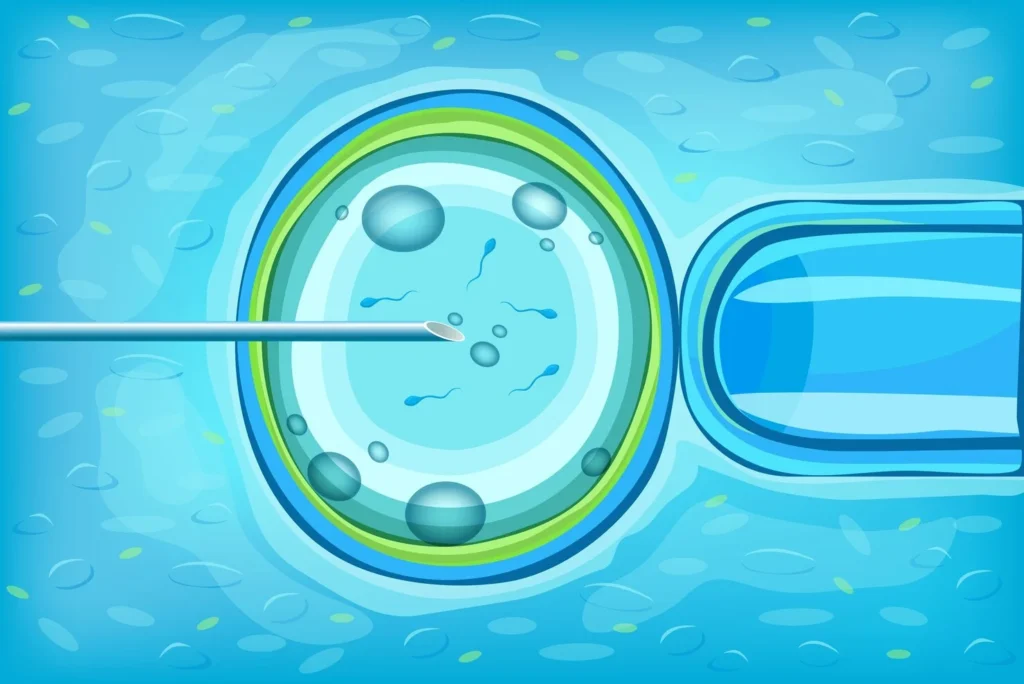IVF has transformed fertility care, providing optimism to numerous couples facing challenges with conception. Among the numerous advancements in this field, one of the most significant is the development of techniques to enhance the selection of viable sperm for fertilisation. This improvement significantly boosts IVF success rates, helping more couples achieve their dream of parenthood.
A prime example of such advancement is the PICSI (Physiological Intracytoplasmic Sperm Injection) technique. This method elevates the sperm selection process to a new level, ensuring that only the most suitable sperm are fertilised. By incorporating PICSI IVF into treatment plans, fertility clinics can significantly improve the chances of successful embryo development and implantation, ultimately leading to higher success rates in IVF procedures.
How PICSI Technology Works:
Hydrogel Drop:
PICSI technology utilises a specialised dish containing a hydrogel drop designed to replicate the natural conditions within the female reproductive tract. This hydrogel drop is infused with hyaluronic acid, a natural substance in the female reproductive system. Hyaluronic acid plays an important role in the reproductive process by interacting with sperm with specific receptors for this substance.
The hydrogel drop provides an environment where semen can interact with hyaluronic acid under controlled conditions. This mimics the natural selection process in the female body, where mature and physiologically competent semen is more likely to bind to hyaluronic acid. This selection mechanism helps to identify semen that has undergone optimal maturation within the female reproductive tract, making it potentially more capable of successfully fertilising an egg.
Sperm Selection:
During the PICSI procedure, semen collected from the male partner or a semen donor is introduced into the hydrogel drop containing hyaluronic acid. Healthy semen with specific receptors for hyaluronic acid will selectively bind to this substance within the drop. They are characterised by their maturity and functional competence, as indicated by their ability to interact with hyaluronic acid.
The PICSI selection process is based on the principle that semen that binds to hyaluronic acid is more likely to have intact DNA and fewer genetic abnormalities. These selection criteria aim to improve the overall quality of semen chosen for fertilisation, potentially enhancing the chances of successful embryo development during IVF treatments. By prioritising semen with these optimal characteristics, PICSI contributes to better outcomes in assisted reproductive technologies, offering hopeful prospects for couples undergoing fertility treatments.
Sperm Retrieval:
After an incubation period within the hydrogel drop, sperm that have successfully bound to the hyaluronic acid are retrieved for further use in the IVF procedure. These selected sperm are believed to possess better genetic integrity and functional competence than sperm selected solely based on traditional criteria such as motility and morphology.
The retrieval of sperm bound to hyaluronic acid is a critical step in the PICSI technology. These sperm are considered more likely to contribute to successful fertilisation and embryo development, leading to potentially improved outcomes in IVF treatments. By focusing on the physiological competence of semen through hyaluronic acid binding, PICSI offers a more refined approach to sperm selection that may benefit couples undergoing IVF, particularly in cases where male factor infertility or previous IVF failures are a concern.
PICSI IVF technology represents a significant advancement in assisted reproductive technology, particularly in the context of in vitro fertilisation (IVF). By enhancing the process of semen selection through the use of hyaluronic acid in a specialised hydrogel drop, PICSI offers a more refined and physiological approach compared to traditional methods based solely on sperm motility and morphology. This innovative technique aims to improve the quality of semen chosen for fertilisation, potentially leading to higher success rates in embryo development and implantation during IVF procedures.






